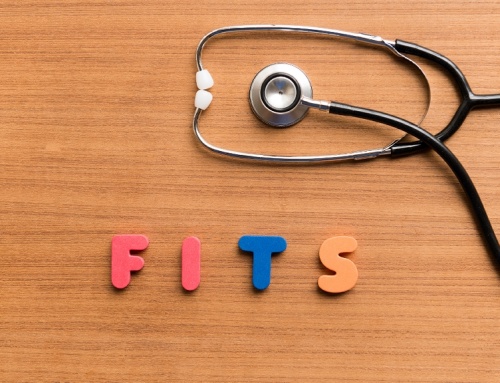CLIENT-CENTERED PATIENT ADVOCACY
TO EXTEND AND ENHANCE THE
QUALITY AND DURATION OF AN ANIMALS LIFE!
This basic concept was often embraced in the practice’s mission statement. When a practice accepts that they MUST talk for the welfare of the animal with the stewards of this four-footed family members, the practice becomes legendary in the minds of the clients.
Most of you know I am an advocate of photonic therapy (Dr. Tim Crowe shared it with our participants on a VCI Seminars at Sea). I am attaching an article by the original advocate, Dr. Brian McLaren. The photonic pen is about $1000, and the new version is much more efficient than the one shared in this article. Most practices start by using it on suture lines, and are amazed at the NON-SWELLING attributes of the treated incision line. Then many practices progress to “down in the hips” dogs, and after a M-W-F 3-week treatment plan (conducted on an outpatient plan with veterinary nurses), clients are usually amazed at the return of locomotion. I personally have treated seizures using the vestibular points shared by Dr. McLaren, with a rapid response rate. Talk about “legendary” – this is a “gee whiz” aspect for any practice, and makes the nursing staff a significant income center.
Dr. Brian McLaren,
Q.D.A.H., B.V.Sc., C.V.A. (IVAS).,
Member, Intl. Assoc. Study of Pain
Member Bioelectromagnetic Soc.
16/09/10
A New Paradigm for Understanding and Treating Pain.
Abstract. A justification for the use of photons of light to reduce pain is presented, and a logarithmic electrical pH scale is proposed to objectively measure pain.
Key words. Pain, light, objective measurement.
Introduction.
Pain is normally measured subjectively in humans through a series of analogue scales and multidimensional pain inventories such as the McGill Questionnaire. In laboratory animals where individual reported subjectivity is not possible, an attempt is made to measure objectively, with such tests as the mouse tail flick time response, the time to withdrawal of a carrageen injected foot on a hotplate, or vocalisation.
Acidity is measured on a logarithmic pH scale. As pain may be correlated electrically to increases in acidity in areas of the skin, it is proposed that all organisms could have their pain measured objectively on an electric logarithmic pH scale.
Discussion. Pain may be defined as complex set of physical and emotional responses to real or potential tissue damage and suffering.
Pain is the main reason for some 50 % of all cases presenting at an emergency hospital department, and 30 % of family practice visits. One may accept the same will hold true for clinical veterinary practice. Veterinary medicine tends to be a poor cousin to, and blindly follows, conventional human medicine, and uses for actual or potential animal pain the same analgesics, the same anaesthetics, and unexplained alternative therapies. As animals cannot complete a “McGill Questionnaire”, or the equivalent, and as veterinarians are trained to recognize pain in their non-verbal patients, through physical and behavioural reactions, the veterinary profession is well placed to become the leaders in constructive thought on how pain may be measured and how it may be most effectively controlled or eliminated.
Relationship between Acid and Electrical Potential. A hydrogen atom consists of a single positive electrical charge called a proton, around which a single negatively charged particle or electron moves. If the electron is removed from the atom, the remaining single proton is known as a hydrogen ion or H+. An ion is therefore a chemical entity, which has either one (or more) too many, or one (or more) too electrons, thus it is unstable and both chemically and electrically reactive.
By definition an acid is something that donates a hydrogen ion. Therefore, the definition may be restated as being, an acid is something that donates a positive charge of electricity. The electrical potential across a cell membrane is in the order of 90mV. It may be calculated that 90mV is equivalent to 1.5 pH units, being alkaline on the inside of the cell and acidic outside. It only takes some 20mV change (0.33 pH unit change) to trigger a reaction. The body operates within a narrow pH range and uses biochemical buffers, the lungs and the kidneys as three systems to keep the acid-base balance in check. When a situation arises where the potential difference drops to 45mV or the equivalent of 0.75 of a pH unit cells tend to shut down or die.
As acidity is measured on a log scale, the 45 mV electrical charge must also be seen in relation to the 20mV trigger as not just being 2.25 times greater but on a log scale 2.25 times represents 1,250 times greater.
Relationship between Acid and Pain. As an acupuncture point is 5 to 45 mV more positive than the surrounding skin, and as an acupuncture point tends to be more tender or painful, we can now start to relate acidity to pain. Accepting that pain and acidity may be correlated electrically, as acidity is measured on a logarithmic scale to base 10, it is logical that pain should be measured electrically based on a log scale. The more positive, the more acidic, and therefore the more painful.
Relationship between Pain and Electrical Potential. For over a 160 years, it has been known that human skin drives an ionic current out of wounded regions and this is known as the discharge of injury. DuBois Reymond (1848) used one of the earliest galvanometers to measure about 1 uA leaving small wounds in his skin. When tissue is injured either through accident or surgery, it becomes positively charged, a wound current traverses the epidermis and generates a local electric field potential, which points toward the injury from all directions around it.
The discharge of injury increases with the severity of injury, to a level of 200mV/mm. Within the zone of physiologic normal (pH = 7.4) we can calculate the mV equivalents, to where 60mV = 1pH unit .
In the classes of invertebrates and lower vertebrates with the power of regeneration after injury, the electrical potential of the tissue moves to the positive side for about three days, then raises steeply to negative polarity and regeneration commences. In Amphibians, and higher vertebrates without the power of regeneration, the tissue potential similarly moves to positive on injury, and the stays positive (and painful) until eventually healed.
Relationship between Light Energy and Pain Relief. In the 1950’s it was demonstrated that all tissue under pressure is negatively charged, and it is the negative charges that form the attraction for fibroblasts to heal open wounds. While one would not wish pressure on a wound, it is easy to apply light in the form of photons of a specific wavelength, to painlessly, non-invasively and scientifically heal the wound faster with less pain. Keratinocytes are quite sensitive to imposed electric fields in vivo, migrating towards the negative pole in fields of 10 400 mV/mm. Therefore, the endogenous electric field in wounds exhibits the optimal amplitude and direction to attract keratinocytes into the wounded region by galvanotaxis.
Photonic Therapy by supplying photons of light that are converted to electrons, can neutralise pain. This happens at a number of levels.
1. There is the straight electro-chemical conversion, which causes change to the pH and electrical potential of the skin.
2. By changing the electron transport in the mitochondrial respiratory chain, we can manipulate the localized oxygenation of the tissue and the pain caused by low O2 levels (redox potential). The redox potential or reduction-oxygenation reaction, is the biological equivalent of an acid-base reaction. It is important to understand and differentiate the fact that all acid/base reactions are local and occur only when in close contact, whereas changes between redox potential pairs can occur at a distance.
3. Finally, by changing the electrical field potential of an area of the skin, we are changing a corresponding somato-visceral map within the respective sensory nuclei in the brain, to produce ameliorating neurochemicals to reduce or modulate the pain such as encephalin and endorphins.
The colour of light is the human eye’s perception of the energy level, and just as the body works within a narrow physiological pH range, so it may be calculated the optimum light energy or frequency to use for maximum effect. As photons of light get converted to electrons in the tissue, they become a form of alkalising agent reducing pain as previously explained. Not all light however, works in the same way due to the refractive index of the tissue.
Conclusion. The potential energy of a positive charge increases when it is moved opposite to the field, just as the potential energy of a mass increases when it is moved opposite to the gravitational force or to a greater height. Since the force exerted on a negative charge is opposite to the field, its potential energy increases when it moves parallel to the field. Therefore, light energy should be placed directly on a wound.
Photonic Therapy allows a wound to be safely and non-invasively “painted” with a specific form of light to reduce pain, and in a scientifically calculable manner, to estimate a dose rate that will change the redox potential, and stimulate beneficial CNS reactions.
This is the first time a logarithmic electrical pH scale for pain has been proposed. The mathematical justification for the wave length selected and the radiometric flux (photon intensity) required to formulate a dose rate is included in a full paper which has been submitted for publication in a peer reviewed journal.






